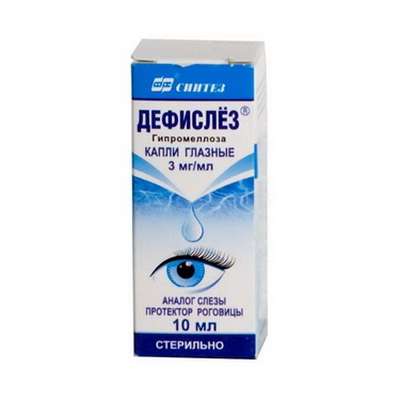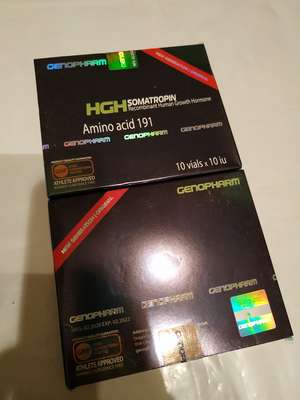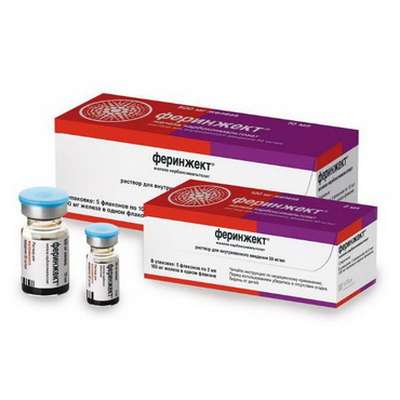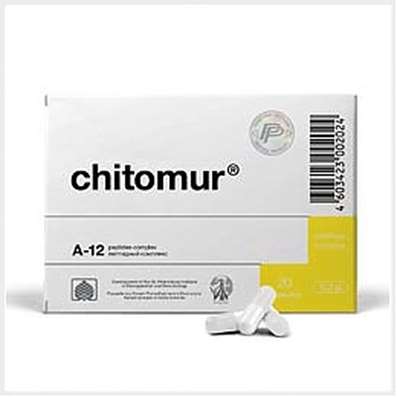Instruction for use: Extavia
I want this, give me price
Dosage form: Lyophilizate for the preparation of a solution for subcutaneous administration
Active substance: Interferonum beta-1b
ATX
L03AB08 Interferon beta-1b
Pharmacological groups:
Cytokine. Means for the treatment of multiple sclerosis [Antiviral (except HIV) agents]
Interferons
The nosological classification (ICD-10)
G35 Multiple Sclerosis: Disseminated Sclerosis; Multiple sclerosis; Recurrent multiple sclerosis; Secondary-progressive multiple sclerosis; Exacerbation of multiple sclerosis; Mixed forms of multiple sclerosis
Composition and release form
Lyophilizate for the preparation of a suspension for subcutaneous administration 1 vial.
Interferon beta-lb 0.3 mg
(Corresponding to 9.6 million IU of interferon beta-lb)
Auxiliary substances: human albumin - 15 mg; Mannitol - 15 mg
Solvent: 0.54% solution of sodium chloride
In 1 ml of the reconstituted solution contains 8 million IU (0.25 mg) of interferon beta-lb
In bottles complete with a solvent; In a pallet plastic 5 or 15 bottles and blisters with syringes in a pack of cardboard.
Description of dosage form
Liofilizate for the preparation of a suspension for SC administration: lyophilized white mass.
Solvent: clear colorless solution
Reconstituted solution: solution from slightly opalescent to opalescent, colorless or light yellow in color.
Pharmachologic effect
Mode of action - antiviral, immunomodulating.
Pharmacodynamics
Interferon beta-lb, used in multiple sclerosis (PC), has antiviral and immunoregulatory activity. The mechanism of action of interferon beta-lb with multiple sclerosis is not completely established. However, it is known that the biological effect of interferon beta-lb is mediated by its interaction with specific receptors that are found on the surface of human cells. The binding of interferon beta-lb to these receptors induces the expression of a number of substances that are considered as mediators of the biological effects of interferon beta-lb. The content of some of these substances was determined in serum and fractions of blood cells of patients receiving interferon beta-lb. Interferon beta-lb reduces the binding ability and expression of receptors for gamma-interferon, enhances their decay. The drug increases the suppressor activity of peripheral blood mononuclear cells.
In both remitting and secondary-progressive multiple sclerosis, interferon beta-lb treatment reduces the incidence (by 30%) and severity of clinical exacerbations of the disease, the number of hospitalizations and the need for steroid treatment, and also prolongs the duration of remission.
In patients with secondary-progressive multiple sclerosis, the use of interferon beta-lb allows to delay further progression of the disease and the onset of disability (including severe disability, when patients are forced to constantly use a wheelchair) for up to 12 months. This effect is observed in patients with both exacerbations of the disease and without exacerbations, as well as with any index of disability (in the study, patients rated from 3 to 6.5 points on the EDSS extended disability scale) participated.
The results of MRI of the brain of patients with remitting and secondary-progressive multiple sclerosis against interferon beta-lb showed a significant positive effect of the drug on the severity of the pathological process, as well as a significant reduction in the formation of new active foci.
Pharmacokinetics
After sc administration of interferon beta-lb at a recommended dose of 0.25 mg, the serum drug concentrations are low or not at all determined. In this regard, there is no information on the pharmacokinetics of the drug in patients with multiple sclerosis receiving interferon beta-lb at the recommended dose.
After SC administration 0.5 mg of Cmax preparation in plasma is achieved 1-8 hours after injection and is about 40 IU / ml. Absolute bioavailability with SC introduction - about 50%.
In the / in the use of interferon beta-lb Cl and T1 / 2, preparations from serum averaged 30 ml / min / kg and 5 h respectively.
The administration of interferon beta-lb every other day does not lead to an increase in the concentration of the drug in the serum, and its pharmacokinetics does not change during the course of therapy.
With the use of interferon beta-lb at a dose of 0.25 mg every other day, the levels of biological response markers (neopterin, beta 2-microglobulin and immunosuppressive cytokine-interleukin) are significantly increased in comparison with baseline values 6-12 hours after the first dose Preparation. They reached a peak in 40-124 h and remained elevated during the 7-day (168 h) study period.
Indication of the Extavia
Remitting multiple sclerosis (RRS) to reduce the frequency and severity of exacerbations in outpatients (ie, patients who can move without assistance) in the presence of a history of 2 or more exacerbations of the disease in the last 2 g followed by a complete or incomplete recovery of the neurological deficit ;
Secondary-progressive multiple sclerosis with an active course of the disease characterized by exacerbations or marked deterioration of neurologic functions during the last 2 years - to reduce the frequency and severity of clinical exacerbations of the disease, and also to slow the progression of the disease.
Contraindications
Hypersensitivity to natural or recombinant interferon beta or human albumin or any other component of the drug;
Severe forms of depression and / or suicidal thoughts (including in the anamnesis);
Liver disease in the stage of decompensation;
pregnancy;
The period of breastfeeding.
Carefully:
Heart disease, in particular, heart failure III-IV stage according to the classification of the New York Heart Association (NYHA), cardiomyopathy;
Monoclonal gammopathy;
Anemia, thrombocytopenia, leukopenia;
Impaired liver function;
Epileptic seizures in the anamnesis;
Severe renal dysfunction;
Patients under the age of 18 years (due to the lack of sufficient experience of use, caution is necessary when using the drug).
Application in pregnancy and breastfeeding
It is not known whether the drug can cause fetal damage in the treatment of pregnant women or affect the reproductive function of a person. In controlled clinical trials, patients with multiple sclerosis had spontaneous abortion. In studies in rhesus monkeys, human interferon beta-lb exerted an embryotoxic effect and in higher doses caused an increase in the frequency of abortions. Women of reproductive age should be treated with safe methods of contraception. In case of pregnancy during the treatment with the drug Ekstavia or pregnancy planning is recommended to cancel the drug.
It is not known whether interferon beta-lb is excreted in breast milk. Given the theoretical possibility of developing unwanted reactions in infants who are breastfeeding, it is necessary to stop breastfeeding or to cancel the drug.
Side effects
Flu-like symptoms can be weakened by applying NSAIDs.
The experience of using the drug for the treatment of patients with multiple sclerosis is rather limited, therefore, negative reactions that occur at a low frequency could not yet be observed.
To describe the specific reaction, its synonyms and associated states, the most appropriate term is used from the Medical Dictionary for Regulatory Activities (MedDRA).
The following are undesirable events observed with a frequency of 2% and higher than in the placebo group in patients who received controlled drug trials at a dose of 0.25 or 0.16 mg / m2 every other day for up to 3 years.
General disorders and reactions at the injection site: reactions at the site of administration (including hemorrhages, hypersensitivity reactions, inflammation, swelling, pain, irritation, edema, atrophy at the injection site), asthenia, a complex of influenza-like symptoms (includes influenza symptoms and / or Combination of at least 2 of the following adverse events: fever, chills, myalgia, general malaise, increased sweating), pain of different locations, fever, chills, peripheral edema, chest pain, general Malaise, necrosis at the injection site.
From the cardiovascular system: arterial hypertension.
From the side of the digestive system: pain in the abdomen.
On the part of the hepatobiliary system: an increase in ALT * more than 5 times compared with the original, increasing the level of ACT * more than 5 times compared with the original.
On the part of the blood and lymphatic system: lymphopenia (<1500 / mm3), absolute neutropenia (<1500 / mm3), leukopenia (<3000 / mm3), lymphadenopathy.
From the musculoskeletal system: muscle hypertension, myalgia, myasthenia gravis, back and limb pain, leg cramps.
From the central and peripheral nervous system: headache, dizziness, insomnia, migraine, paresthesia, coordination disorders.
From the sense organs: conjunctivitis, visual impairment, pain in the ears.
On the part of the respiratory system: dyspnea.
Dermatological reactions: skin reactions, rash.
On the part of the genitourinary system: mandatory urges to urinate, in premenopausal women - metrorrhagia (acyclic bleeding), in men - impotence.
Note: * Changes in laboratory indicators.
Against the background of interferon beta-lb therapy in clinical practice, regardless of the presence of a cause-and-effect relationship with the use of the drug, the undesirable effects listed below were noted. The incidence of adverse events was estimated as follows: very often (≥1/10), often (≥1 / 100; <1/10), sometimes (≥1 / 1000; <1/100), rarely (≥1 / 10000 ; <1/1000), very rarely (<1/10000).
General disorders and reactions at the injection site: very often - a complex of influenza-like symptoms *, chills *, fever *, reactions at the injection site * (inflammation *, pain, often - necrosis at the site of injection *); Rarely - pain in the chest, general malaise, increased sweating, increased or decreased body weight. The frequency of influenza-like syndrome decreases with time.
On the part of the blood and lymphatic system: sometimes - anemia, thrombocytopenia, leukopenia; Rarely - lymphadenopathy.
From the endocrine system: rarely - hyperthyroidism, hypothyroidism, thyroid dysfunction.
Metabolic and alimentary disorders: rarely - hypertriglyceridemia.
From the central and peripheral system: rarely - convulsions, dizziness.
Mental disorders: sometimes - depression; Rarely - confusion, excitement, emotional lability, suicidal attempts, anorexia.
From the cardiovascular system: sometimes - arterial hypertension; Rarely - cardiomyopathy, tachycardia, severe palpitations; Very rarely - vasodilation.
On the part of the respiratory system: rarely - bronchospasm, dyspnea.
From the side of the digestive system: sometimes - nausea, vomiting; Rarely - pancreatitis, diarrhea.
From the hepatobiliary system: sometimes - increased activity of ACT and ALT; Rarely - hyperbilirubinemia, increased activity of GGT, hepatitis.
Dermatological reactions: sometimes - hives, rash, itching, alopecia; Rarely - a discoloration of the skin.
From the musculoskeletal system: sometimes - myalgia, muscle hypertonia, arthralgia.
From the female reproductive system: rarely - a menstrual cycle; Very rarely - menorrhagia (prolonged menstrual bleeding).
Allergic and immunopathological reactions: rarely anaphylactic reactions.
Note: * The frequency of development of AE data is indicated in accordance with clinical research data.
Interaction
Special studies of the interaction of the drug Ecstavia with other drugs have not been conducted.
The effect of the drug at a dose of 0.25 mg (8 million IU) every other day on the metabolism of drugs in patients with multiple sclerosis is unknown.
Against the background of the use of the drug Ekstavia SCS and ACTH, appointed for up to 28 days in the treatment of exacerbations, are well tolerated. The use of the drug Ekstavia simultaneously with other immunomodulators, in addition to SCS or ACTH, has not been studied.
Interferons reduce the activity of hepatic cytochrome P450-dependent enzymes in humans and animals. Caution should be exercised when prescribing the drug Ecstavia in combination with medications with a narrow therapeutic index, the clearance of which is largely dependent on the hepatic cytochrome P450 system (eg antiepileptic drugs, antidepressants).
Care should also be taken when using any drugs that affect the hematopoiesis system at the same time.
In the absence of compatibility studies, this drug should not be confused with other drugs.
Dosing and Administration
SC, every other day.
The recommended dose is 0.25 mg (8 million IU), which is contained in 1 ml of the prepared solution.
Treatment with Ecstavia should be started under the supervision of a doctor who has experience in treating this disease.
At present, the question of the duration of treatment with the drug Ecstavia remains unresolved. In clinical trials, the duration of therapy in patients with remitting and secondary-progressive multiple sclerosis reached 5 years and 3 years, respectively. The duration of the course is determined by the doctor.
Preparation of injection solution
To dissolve the lyophilized interferon beta-lb powder for injections, use the supplied prepared syringe with solvent and needle. In the bottle with the drug Ekstavia injected with 1.2 ml of solvent (sodium chloride solution 0.54%). The powder must be dissolved completely without shaking. Before use, inspect the finished solution. In the presence of particles or a change in the color of the solution, it can not be used. In 1 ml of the prepared solution contains 0.25 mg (8 million ME) of interferon beta-lb.
The drug should be injected immediately after the preparation of the solution. If the injection is postponed, the solution should be stored in the refrigerator and used for 3 hours. The solution should not be frozen.
If the patient forgot to take a shot at the right time, then you must enter the drug immediately, as soon as he remembered it. The next injection is performed at 48 h.
Overdose
With the introduction of interferon beta-lb iv in a dose of up to 5.5 mg (176 million ME) 3 times a week, adult patients with cancer had no serious adverse events.
Special instructions
The drug contains human albumin, and for this reason there is very little risk of transmission of viral diseases. The theoretical risk of transmission of Creutzfeldt-Jakob disease is also considered highly unlikely.
Changes in laboratory indicators. In addition to the standard laboratory tests prescribed for the management of patients with multiple sclerosis, before starting therapy with the drug Ecstavia, as well as regularly during the treatment, it is recommended to conduct a detailed blood test, including the definition of the leukocyte formula, platelet count and biochemical blood test, and also check the liver function For example ACT, ALT and GGT activity). When managing patients with anemia, thrombocytopenia, or leukopenia (individually or in combination), a more detailed monitoring of the detailed blood test may be required, including the determination of the number of red blood cells, leukocytes, platelets and the leukocyte formula.
Disorders from the digestive system. In rare cases, with the use of the drug Ekstavia, there was a development of pancreatitis, in most cases associated with the presence of hypertriglyceridemia.
Dysfunction of the liver and biliary tract. Clinical studies have shown that therapy with the drug Ecstavia can often lead to an asymptomatic increase in hepatic transaminases, which in most cases is expressed only slightly and is transient.
As with other beta-interferon treatment, severe liver damage (including liver failure) with the use of the drug Ekstavia are rare. The most severe cases were observed in patients exposed to hepatotoxic drugs or substances, as well as in certain concomitant diseases (eg malignant diseases with metastasis, severe infections and sepsis, alcohol abuse).
When treating with the drug Ecstavia, it is necessary to monitor liver function (including assessment of the clinical picture). Increasing the level of transaminases in the blood serum requires careful observation and examination. With a significant increase in transaminases in the blood serum or the appearance of signs of liver damage (eg jaundice), the drug should be discontinued. In the absence of clinical signs of liver damage or after the normalization of the level of liver enzymes, it is possible to resume therapy with monitoring the liver function.
Endocrine disorders. Patients with thyroid dysfunction are recommended to regularly check the function of the thyroid gland (thyroid hormones, TTG); In other cases - according to clinical indications.
Diseases of the cardiovascular system. The drug Ecstavia should be used with caution in patients with heart disease, particularly in heart failure III-IV stage according to the classification of the New York Heart Association (NYA), since such patients were not included in the clinical studies.
If against the background of treatment with the drug develops cardiomyopathy and it is supposed that this is due to its use, then the treatment with the drug Ecstavia should be discontinued.
Diseases of the nervous system. Patients should be informed that the side effect of the drug Ecstavia may be depression and suicidal thoughts, which should appear immediately and consult a doctor.
In two controlled clinical trials involving 1657 patients with secondary-progressive multiple sclerosis, there was no significant difference in the incidence of depression and suicidal ideation with the use of the drug Ekstavia or placebo. Nevertheless, caution should be exercised in prescribing the drug Ecstavia to patients with depressive disorders and suicidal thoughts in the anamnesis. If such phenomena occur on the background of treatment, the question of whether to discontinue the drug should be considered.
The drug Ekstavia should be used with caution in patients with epileptic seizures in history.
General disorders and reactions at the injection site. There may be serious allergic reactions (rare, but manifested in acute and severe form, such as bronchospasm, anaphylaxis and urticaria).
If signs of damage to the integrity of the skin appear (for example, the flow of fluid from the injection site), the patient should consult a doctor before continuing injection.
Patients who received the drug Ekstavia, there were cases of necrosis at the injection site. Necrosis can be extensive and spread to the muscular fascia, as well as adipose tissue and, as a result, lead to the formation of scars. In some cases, the removal of necrotic areas or, more rarely, skin transplantation. The healing process can take up to 6 months.
When multiple foci of necrosis occur, treatment with Ecstavia should be stopped until the healing of the damaged areas is complete. In the presence of a single focus, if the necrosis is not too extensive, the use of the drug can be continued, as in some patients the healing of the necrotic area at the injection site occurred against its background.
To reduce the risk of developing a reaction and necrosis at the injection site, patients should be recommended:
- carry out injections strictly following the rules of asepsis;
- Change injection site each time;
- Administer the drug strictly.
Periodically, one should monitor the correctness of performing independent injections, especially when local reactions occur.
Neutralizing antibodies. As with any other drug with protein content, the use of the drug Ekstavia, there is the possibility of the formation of antibodies. In a number of controlled clinical trials, serum analysis was performed every 3 months to detect the development of antibodies to interferon beta-1b.
In these studies, it was shown that neutralizing antibodies to interferon beta-lb appeared in 23-41% of patients, which was confirmed by at least 2 subsequent positive results of laboratory tests. In 43-55% of these patients, in subsequent laboratory studies, a stable absence of antibodies to interferon beta-lb was detected.
It has not been proven that the presence of neutralizing antibodies has any significant effect on clinical outcomes, including MRI data. With the development of neutralizing activity, the appearance of any side reactions was not associated.
The decision to continue or discontinue therapy should be based on the indicators of the clinical activity of the disease, and not on the status of neutralizing activity.
Immune disorders. The use of cytokines in patients with monoclonal gammapathy was sometimes accompanied by a systemic increase in capillary permeability with the development of shock and death.
Influence on the ability to drive vehicles and work with mechanisms. Special studies have not been conducted. Undesirable effects from the CNS can affect the ability to drive and work with machinery. In this regard, care must be taken when dealing with potentially hazardous activities requiring increased attention.
Conditions of supply of pharmacies
On prescription.
Storage conditions of the drug Extavia
At a temperature not higher than 25 ° C (do not freeze).
Keep out of the reach of children.
Shelf life of the drug Extavia
2 years.
Do not use after the expiry date printed on the package.

 Cart
Cart





